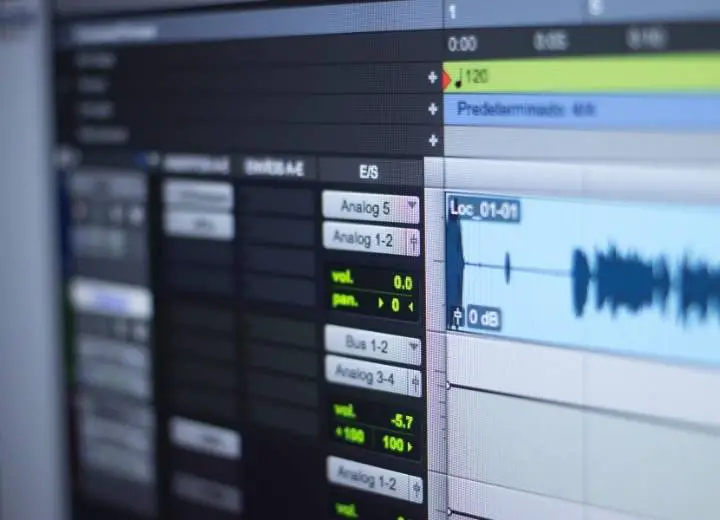
An equally important part of recorded sound is volume. For recordings, recording volume vs playback volume is the two most important points.
What exactly are these two volume levels? How does it affect the recorded sound?
Check it out below!
What is a Recording Volume?
Recording volume is the amplitude of the sound one uses to make a recording over it. We can take, for example, when you want to record a voice on the computer. You can select the volume level you wish to register on the Mixer Toolbar.
Any computer operating system has this function. Most recording volumes will have an icon of a recording microphone.
Recording volume will have a recording volume slider. You need to adjust the retractable volume level on this slider.
This slider can control the levels of the recording device. It can be a loud input volume level or a low input volume level.
What is the Playback Volume?
Playback volume is a tool that helps you control the volume of playback audio. It directly adjusts the loudness of the sound that you previously recorded and is currently outputting.
Every computer or electronic audio player will have a playback volume. Although they have many different designs, the primary purpose is still to adjust the volume of the sound emitted.
The playback volume slider is the symbol for playback volume. You can adjust the loudness of the sound being played back through this slider. They have an icon of a speaker emitting sound.
However, you have to understand one thing. The playback volume slider cannot affect the mixing level of the audio. So it also does not affect the level of sound output.
Once you’ve trimmed the audio in the lung, this playback slider has lost its effect. It can’t be effective at all.
Recording Volume vs Playback Volume: Which Is More Important?
This question is a difficult one. Both of these volume levels are of some importance to a recorded audio track. However, the recording volume will be a bit more critical.
To clarify this issue, we will analyze it right below!
#1. The importance of recording volume
A recording will appear only when we have audio input. And whether the sound is perfect or not depends on how it records the original sound.
We might see that the first step of recording sound is crucial. It directly affects the sound output.
If the input sound is distorted, it won’t be easy to playback the perfect sound.
Moreover, when the sound is loud and clear, the recorded sound will also be more accurate.
Recording volume is significant, and it will determine the loudness or low of the recorded sound. You need to adjust the volume correctly during this stage.
If the volume is too low and record, after output will be barely heard at all. But when the volume is too loud, the sound will become distorted.
#2. The importance of playback volume
Playback volume determines what listeners will hear when playing recorded audio. It is the part that shows all the efforts we have made before.
It doesn’t affect the sound output level but only the output volume. So when the output becomes distorted, you need to adjust the playback level, not the playback volume.
Playback volume only determines the loudness and lowness of the sound output. If the volume is low, the sound will be slight. If the volume is high, the sound will be louder.
In short, the influence of playback volume on the sound only stops at loudness, without any additional effect.
How To Adjust Recording and Playback Volume Correctly?
Usually, we will adjust the recording volume or playback volume via the sliders of each type. However, this adjustment does not restore the correct volume for each output or input.
If the recording requires a high precision volume level, we must tune it very precisely. But the sliders on the Toolbar don’t have exact figures. This is very difficult for you to align to the volume level you want.
Do not worry! We have a solution for you.
Double-click the playback volume slider or the recording volume slider. At this point, a release window will appear.
You can alter the volume of the sound most accurately by entering a number in the box above. There are several shortcut installers to make these two tool windows appear faster.
Frequently Asked Questions
1. What should I do when my input sound is always distorted?
It would be best if you double-clicked the recording volume. Your recording volume level may be too high. Try dragging the volume recording slider down until the sound is out of distortion.
2. What should I do when playback volume is lower than recording volume?
There have been quite a few people facing the same situation as you. A simple trick to do this well is to uncheck “Independent Monitoring Level”.
First, go to Preferences, and Audio, then make sure you have unchecked “Independent Monitoring Level”. Once finished, go back and check your recorded audio and playback.
3. I’m new to Audacity; does it have rotation or balance control for playback devices?
As far as we know, Audacity has no rotation or balance controls for playback devices. If you want to adjust or control the balance, use the audio system controls once Audacity is up and running.
Summary
Recording volume and playback volume are both essential in the process of recording or producing sound. They all have a vital influence on the final sound.
Hopefully, after our sharing, you will better understand the volume of the sound.
Thanks for reading!
